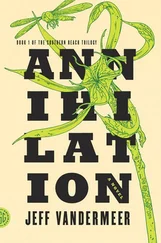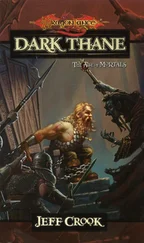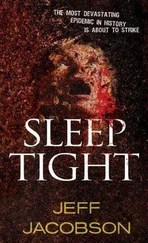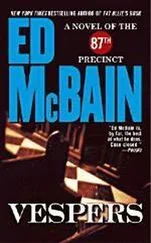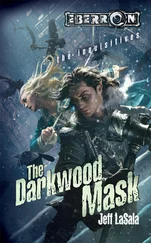Jeff Rovin - Vespers
Здесь есть возможность читать онлайн «Jeff Rovin - Vespers» весь текст электронной книги совершенно бесплатно (целиком полную версию без сокращений). В некоторых случаях можно слушать аудио, скачать через торрент в формате fb2 и присутствует краткое содержание. Жанр: Триллер, на английском языке. Описание произведения, (предисловие) а так же отзывы посетителей доступны на портале библиотеки ЛибКат.
- Название:Vespers
- Автор:
- Жанр:
- Год:неизвестен
- ISBN:нет данных
- Рейтинг книги:5 / 5. Голосов: 1
-
Избранное:Добавить в избранное
- Отзывы:
-
Ваша оценка:
- 100
- 1
- 2
- 3
- 4
- 5
Vespers: краткое содержание, описание и аннотация
Предлагаем к чтению аннотацию, описание, краткое содержание или предисловие (зависит от того, что написал сам автор книги «Vespers»). Если вы не нашли необходимую информацию о книге — напишите в комментариях, мы постараемся отыскать её.
Vicious bat attacks moving southward along the Hudson River prompt Nancy Joyce, a bat scientist who works for the Bronx Zoo, to investigate. When the attacks move into the New York subway system, Manhattan police detective Robert Gentry becomes involved. Joyce and Gentry team up to determine what is causing this unusual behavior. What they discover will keep listeners pinned to their seats and clawing for more.
Vespers — читать онлайн бесплатно полную книгу (весь текст) целиком
Ниже представлен текст книги, разбитый по страницам. Система сохранения места последней прочитанной страницы, позволяет с удобством читать онлайн бесплатно книгу «Vespers», без необходимости каждый раз заново искать на чём Вы остановились. Поставьте закладку, и сможете в любой момент перейти на страницу, на которой закончили чтение.
Интервал:
Закладка:
“Some of it,” Gentry said.
“If the bat is a vesper,” Lowery said, thinking aloud, “then the musculature Nannie just described would make it a seriously deformed specimen. Almost like a flying bull.”
“Why?” Gentry asked. “Aren’t there some pretty big nondeformed birds?”
“There are,” Joyce agreed. “But birds have an entirely different anatomy from bats. A bird’s feathers provide a great deal of lift, and they have just two opposing flight muscles. Bats have three pairs of pectoral muscles for the downstroke and a complex series of small back muscles for the upstroke. Bats don’t so much flap as move through a rapid series of wing-beat cycles. So there would be a significant weight difference between, say, an albatross with a wingspan of twelve feet and a bat of the same size.”
“All right,” Gentry said. “I think I understand that. So how about this. Can’t you figure out how big this hypothetical bat would have to be to lift a deer into a tree or fly carrying a dead body from somewhere around Riverside Drive to a subway tunnel under Forty-fifth Street?”
“Unfortunately,” Joyce said, “that doesn’t help us much either. As the professor said, we could be dealing with more than one big bat.”
“I did not say they’d be flying in tandem,” Lowery pointed out. “The air currents from one would almost certainly upset the other.”
“Well, you two can discuss all this later,” Gentry said. “The question I need answered is if there is a big bat, do you think it’ll want to stay here or is it just passing through?”
Joyce said she didn’t know. Lowery didn’t say anything. Gentry exhaled loudly.
“What puzzles me about all of this,” Lowery said after a moment, “is if there is such a creature, how it came to be. And why the smaller bats seem to congregate around it. And how it’s managed to remain hidden until now.”
“Maybe it hasn’t been hidden,” Gentry said.
Lowery looked at him. “Explain, please.”
“Earlier this morning I checked through New York state police reports of bat attacks over the last few days. In addition to the incident up in Westchester, there were two attacks by groups of small bats. They follow the Hudson River down from Albany. When I get back to the station house I can look back farther. There may be more.”
“By all means do so,” Lowery said.
Gentry definitely didn’t like the man’s manner. He turned toward Nancy. It was time to take a try-calling-Ari-again break.
“Can I use your phone again?” he asked Nancy.
She nodded.
Gentry walked to the desk and dialed. Captain Moreaux answered. “Ari, it’s Gentry.”
“Robert,” Moreaux said, “I thought you’d want to know we’ve had another attack.”
“Where?”
“The Christopher Street subway station, downtown,” said Moreaux. “A man disappeared from the platform during an attack. With any luck, though, we may have some answers soon.”
“Why?”
“Because an ESU team was just sent in to try and find him.”
Sixteen
In addition to being extremely mobile, the NYPD Emergency Service Unit is fast.
Within fifteen minutes of being informed that a man had been pulled from the downtown subway platform at Christopher Street, a Special Operations Division on the eight-to-four shift was down in the tunnel looking for him. They had arrived in two mobile Radio Emergency Patrol vehicles, 4x4 pickups stocked with rescue equipment, nonlethal weaponry, and body armor. The SOD was comprised of four men and one woman. Field Sergeant Laurie Rhodes was leading the team. They were dressed in heavy vests, blue construction helmets, and Kevlar boots and gloves to protect them from rat bites. They were armed with their service revolvers, two high-intensity hand lights, and a pair of tasers. Each weapon contained two cartridges that fired a pair of connected darts; when the barbs struck a target, they completed a circuit that generated a low-amperage fifty thousand volts. The jolt was sufficient to short-circuit nearby muscles for several seconds without stopping the heart. The subway clerk had said that the missing man had been pulled from the platform. Whoever did it could be an EDP, an emotionally disturbed person-“a Phantom of the Opera wannabe,” Rhodes had said, based on the description of a cloak that had snared the man. The SOD officers wanted to be prepared.
They left the platform where the sixth precinct officer had found the headphones. For the duration of the operation, trains were not being permitted north of Houston Street or south of Fourteenth Street.
Officers Brophy, Hotchkiss, Lord, and Nicco and Sergeant Rhodes proceeded in side-by-side rows of two. The sergeant was in front. Rhodes held the radio in her left hand and kept the channel open, allowing her to stay in constant contact with the command truck. The large trailer was parked not far from the station along the southern side of Washington Square Park. Desk Lieutenant Francis Gary Kilar had been brought in from Manhattan South headquarters on Twenty-first Street to run the rescue operation.
Walking off to the left side of the tracks, the SOD team followed a trail of blood droplets along the track bed.
“If I didn’t know differently,” Rhodes said to Kilar, “I’d say the victim was hit by a train and carried along, bleeding. The drops of blood are lying in a long line down the center of the tracks.”
“Have you ever come across anything like this, Sergeant?” Lord asked.
“Yeah,” said Rhodes. “When my cat caught a mouse and ran across the living room carpet.”
“Maybe the mice figure it’s payback time,” Lord said.
“Well,” Kilar said, “the vic definitely wasn’t hit by a train. As we speak I’m looking at the MTA log that was just E-mailed over. It confirms what the clerk said. There was no train on that track at that time.”
“Then I’ve got no explanation for this,” she said. “There’s blood but no footprints. No Walkman. Nothing.”
They were nearly two hundred yards in. Rhodes circled the light carefully and systematically along the walls, ceiling, and columns.
“Now that Lord mentioned it,” Rhodes said, “I’m surprised we haven’t seen any Jimmies down here.” Jimmies were rats, named in honor of actor James “You-Dirty-Rat-You-Killed-My-Brother” Cagney. They usually moved along the rails searching for scraps that had been thrown on the tracks near the stations. And people moving through usually sent them running away.
“Sergeant Rhodes?” Kilar said suddenly.
“Yes?”
“Hold on.”
Rhodes held up her left hand. Everyone stopped.
A moment later Kilar said, “Sergeant, you’re being advised to turn back.”
“Say again?”
“You’re being advised to turn back. We have an incoming-shit,” he said. “Just a minute. I’ve gotta figure this goddamn thing out.”
Lord and Hotchkiss laughed nervously.
Rhodes acknowledged his last communication, then waited.
Lieutenant Kilar had given her an advisement, not an order. Though that could change at any moment, for now it was still her call as to what the team should do. She leaned her head to the right and peered ahead. She shined the light around some more. Up and down, left and right, diagonally in both directions, all very slowly. She didn’t see anything.
She waited, chewing her cheek. She continued to look ahead. If she turned back to talk to the team, they’d look at her. That would leave zero eyes watching the track up ahead.
Lieutenant Kilar came back on the radio in less than a minute.
“Sergeant Rhodes, Sergeant Terry and I are going to attempt to patch through a call from a Dr. Nancy Joyce at the Museum of Natural History.”
Читать дальшеИнтервал:
Закладка:
Похожие книги на «Vespers»
Представляем Вашему вниманию похожие книги на «Vespers» списком для выбора. Мы отобрали схожую по названию и смыслу литературу в надежде предоставить читателям больше вариантов отыскать новые, интересные, ещё непрочитанные произведения.
Обсуждение, отзывы о книге «Vespers» и просто собственные мнения читателей. Оставьте ваши комментарии, напишите, что Вы думаете о произведении, его смысле или главных героях. Укажите что конкретно понравилось, а что нет, и почему Вы так считаете.

